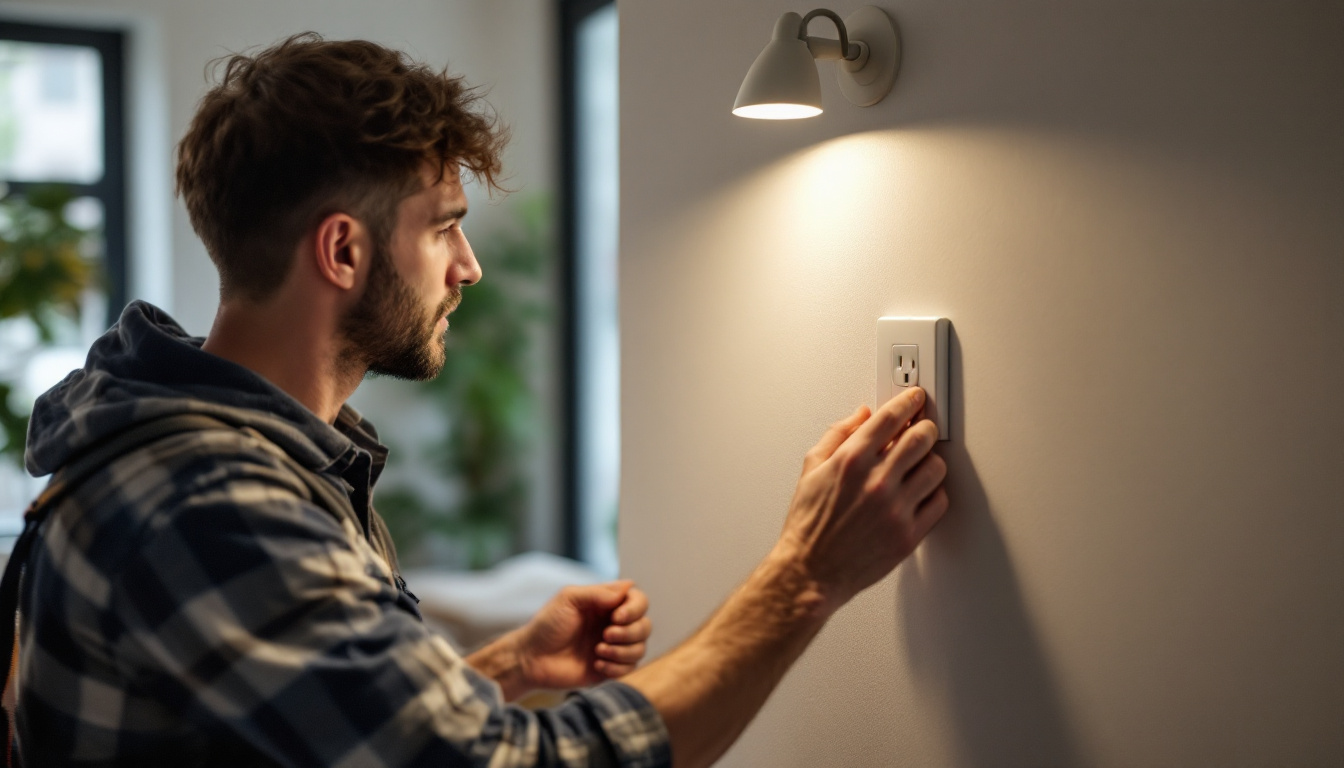

canned ceiling lights, also known as recessed lights, have become a staple in modern lighting design. Their sleek appearance and ability to provide ambient illumination make them an attractive choice for both residential and commercial spaces. However, despite their popularity, lighting contractors often encounter pitfalls when installing these fixtures. Understanding these common mistakes can help ensure a successful installation and enhance customer satisfaction.
Before delving into the common mistakes, it is essential to grasp the fundamentals of canned ceiling lights. These fixtures are typically installed into the ceiling, providing a clean and unobtrusive look. They come in various sizes, shapes, and styles, making them versatile for different applications. The sleek design of canned lights allows them to blend seamlessly with any decor, whether modern, traditional, or minimalist, enhancing the overall aesthetic of a room without drawing attention to themselves.
One of the key advantages of canned lights is their ability to focus light in specific areas. This makes them ideal for task lighting, accent lighting, or general illumination. For example, they can be strategically placed over kitchen islands to illuminate food preparation areas or used to highlight artwork in a gallery setting. However, improper installation or selection can lead to subpar performance and dissatisfaction, resulting in uneven lighting or excessive glare that detracts from the intended ambiance.
There are several types of canned ceiling lights available on the market, each designed for specific purposes. Understanding these variations is crucial for contractors to recommend the right fixture for each project. Choosing the right type ensures that the lighting meets the functional and aesthetic needs of the space.
When installing canned ceiling lights, several factors must be taken into account. These include the spacing of the lights, the type of bulbs used, and the overall design of the space. Proper planning can prevent many common mistakes. Additionally, the choice of dimmable versus non-dimmable fixtures can significantly impact the versatility of the lighting, allowing homeowners to adjust the ambiance according to their needs.
For instance, spacing is critical to achieving an even distribution of light. A common rule of thumb is to place fixtures approximately 4 to 6 feet apart, but this can vary based on the room’s size and purpose. In larger spaces, such as open-concept living areas, it may be necessary to increase the number of fixtures to ensure adequate illumination. Furthermore, the color temperature of the bulbs can also influence the room’s atmosphere; warmer tones create a cozy environment, while cooler tones can enhance focus and productivity in workspaces.
Despite the straightforward nature of installing canned ceiling lights, contractors often make errors that can affect the overall quality of the lighting. Recognizing these mistakes can help improve installation practices and enhance client satisfaction.
One of the most frequent mistakes is improper spacing between fixtures. When lights are too close together, they can create harsh shadows and uneven lighting. Conversely, if they are spaced too far apart, certain areas may remain dimly lit.
To achieve optimal results, contractors should consider the room’s function. For example, task-oriented spaces like kitchens may require closer spacing compared to living areas where ambient lighting is sufficient. Additionally, the size of the room plays a critical role in determining the ideal spacing. A larger room may benefit from a grid layout, ensuring that light is evenly distributed across the entire area, while smaller rooms might only need a few well-placed fixtures to create a cozy atmosphere. It’s also worth noting that the type of bulbs used can influence how light is perceived, with LED options providing a more focused beam that can help mitigate some spacing issues.
Ceiling height plays a significant role in determining how many cans to install and where to place them. Many contractors neglect to account for this factor, leading to either overcrowded lighting or insufficient illumination.
In rooms with higher ceilings, more fixtures may be necessary to ensure adequate light reaches the floor. Conversely, in lower ceilings, fewer fixtures can often suffice, and selecting shallow cans can help maintain a clean aesthetic. Furthermore, the choice of light temperature can also enhance the effect of ceiling height; warmer tones can make a space feel more inviting, while cooler tones can create a more expansive feel. It’s beneficial for contractors to take measurements and even consider using adjustable fixtures that allow for flexibility in light direction, ensuring that every corner of the room is well-lit without overwhelming the space.
The trim of a canned light fixture affects both functionality and style. Contractors sometimes overlook the importance of selecting the right trim for the intended purpose. For instance, baffle trims reduce glare, making them suitable for living rooms, while reflectors can enhance brightness in task-oriented spaces.
Additionally, the color and finish of the trim can impact the overall design. A mismatch between the trim and the room’s decor can detract from the aesthetic appeal. It’s also essential to consider the trim’s material; metal trims can provide a sleek, modern look, while plastic options may offer a softer, more traditional feel. Moreover, the depth of the trim can influence how light is dispersed, with deeper trims often creating a more focused beam, ideal for highlighting artwork or architectural features. By carefully selecting the trim, contractors can not only improve the lighting quality but also elevate the overall design of the space, ensuring that the fixtures blend seamlessly with the existing decor.
Electrical issues are another area where contractors often make mistakes. Proper wiring and circuit considerations are crucial for the safe and efficient operation of canned ceiling lights.
One common mistake is overloading electrical circuits. Each circuit has a maximum load capacity, and exceeding this limit can lead to tripped breakers or even electrical fires. Contractors must ensure that the total wattage of all fixtures on a circuit does not exceed the recommended limit.
To avoid this issue, it is advisable to calculate the total wattage of the fixtures and compare it to the circuit’s capacity. If necessary, distribute the load across multiple circuits.
Another critical aspect is the insulation contact (IC) rating of the fixtures. Canned lights that are not IC-rated should not be installed in insulated ceilings, as they can overheat and pose a fire hazard. Contractors must ensure that the selected fixtures are appropriate for the ceiling type.
Using IC-rated fixtures in insulated ceilings allows for safe installation without the risk of overheating, thereby enhancing safety and compliance with building codes.
The choice of bulbs can significantly affect the performance and efficiency of canned ceiling lights. However, contractors often make mistakes in this area as well.
Not all bulbs are compatible with every fixture. For instance, using a non-dimmable LED bulb in a dimmable fixture can lead to flickering or failure. Contractors should always verify compatibility before making a selection.
Additionally, the color temperature of the bulbs can influence the ambiance of a space. Warmer tones (2700K-3000K) create a cozy atmosphere, while cooler tones (4000K-5000K) are better suited for task-oriented areas.
In today’s environmentally conscious world, energy efficiency is a priority for many clients. Contractors who fail to recommend energy-efficient bulbs may miss out on opportunities to enhance customer satisfaction and reduce energy costs.
LED bulbs are an excellent choice for canned ceiling lights, offering long lifespans and reduced energy consumption. Educating clients about the benefits of energy-efficient options can lead to more informed decisions and greater satisfaction.
Beyond functionality, the aesthetic aspect of canned ceiling lights is crucial. Contractors often overlook design elements that can enhance the overall look of a space.
The design of the lighting should align with the room’s intended use. For example, a home theater may require dimmable options to create a cinematic experience, while a kitchen may benefit from bright, focused lighting for cooking tasks.
Contractors should engage with clients to understand their needs and preferences, ensuring that the lighting design complements the space’s functionality.
Natural light plays a significant role in how artificial lighting is perceived. Contractors sometimes neglect to consider the placement of windows and other light sources when installing canned lights.
By assessing the natural light available in a space, contractors can strategically position fixtures to enhance the overall lighting scheme. This can lead to a more balanced and inviting atmosphere.
Canned ceiling lights offer an array of benefits, but improper installation can lead to a host of issues. By understanding common mistakes and taking proactive measures, lighting contractors can enhance their installation practices and ensure client satisfaction.
From spacing and electrical considerations to bulb selection and design, attention to detail is paramount. By prioritizing these aspects, contractors can avoid pitfalls and deliver exceptional lighting solutions that meet the needs of their clients.
In the competitive landscape of lighting design and installation, a commitment to quality and professionalism will set contractors apart. Embracing best practices in canned ceiling light installations not only enhances the aesthetic appeal of spaces but also fosters long-lasting relationships with clients.
Ready to elevate your canned ceiling light installations with the highest quality products? Look no further than LumenWholesale. Our spec-grade lighting solutions are designed to help contractors like you avoid common installation mistakes, ensuring every project shines with excellence. With unbeatable wholesale prices and free shipping on bulk orders, you can trust that you’re getting the best value without any hidden costs. Don’t compromise on quality or affordability. Visit LumenWholesale today and experience the convenience of superior lighting products that meet the rigorous demands of any space.

Discover why opting for local distributors when purchasing grow lights in bulk might not be the best decision.

Discover how solar path lights are transforming outdoor spaces and giving lighting contractors a competitive edge.

Discover how leveraging advanced wall socket technology can give lighting contractors a competitive edge in securing more bids.

Discover essential insights into area lights with our comprehensive guide tailored for lighting contractors.
Get notified when NEW deals are released.
Optimize your budget with wholesale discounts.
Only top-quality, specification-grade lighting products.
No additional costs at checkout - what you see is what you pay.
We understand the unique needs of contractors.